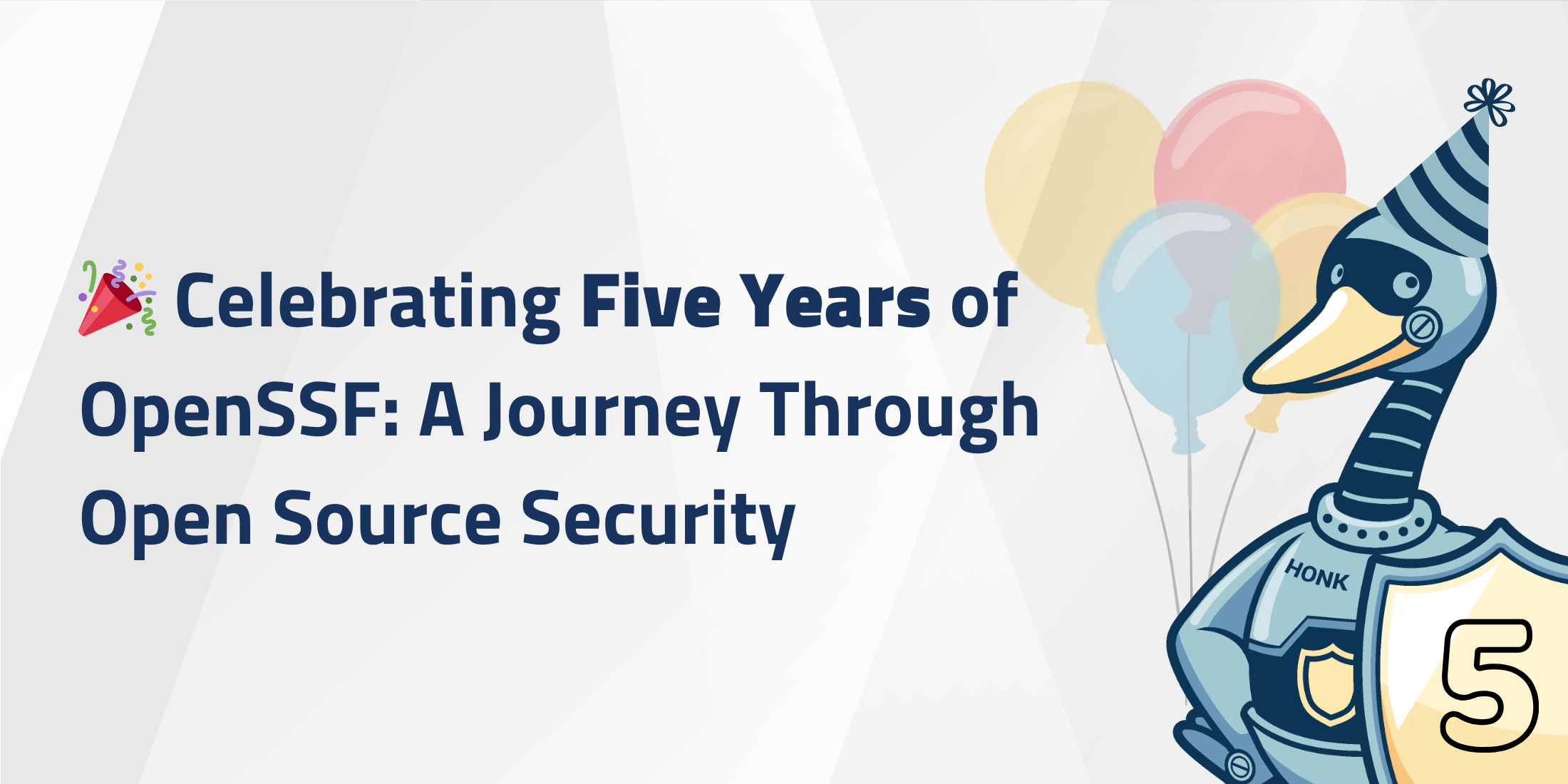CRob (00:14)
Welcome, welcome, welcome to What’s in the SOSS, the OpenSSF’s podcast where we meet interesting people that are in and around the upstream open source ecosystem. My name’s CRob. I’m the chief security architect for the foundation, and I also do security stuff upstream to help protect that open source software we all know and love. And today I have an amazing collection of gentlemen here, and we’re talking about a very important topic. It’s about the value of bringing experts in.
So I would like to pass the microphone around. I’ll start off with Jonatan. Let’s introduce ourselves and kind of talk about what brought you here today to talk about this interesting topic.
Jonatan Männchen (00:57)
Yeah. Hi, I’m Jonathan Männchen. I’m the Chief Information Security Officer at the Erlang Ecosystem Foundation. And the reason I’m here today is that we’ve started implementing a lot of functionality in the security and in the compliance sector, mostly focused on the CRA. And based on that, I’ve met CRob and Michael, these lovely gentlemen in the Alpha and Omega call and was invited to come here and talk about it all.
CRob (01:31)
Ulf
Ulf (01:33)
Yeah, I’m a product owner with Herman Ultrasonics. We are a German machine builder, like a small company, 500 people only, not one of the big tech companies. And we have decided, arbitrary for a weird Swedish tech stack, including Erlang, to do our automation, to do our machine controls. And as a product owner, I had to make decisions whether how we would tackle security in the longer run. And that brought me here.
CRob (02:09)
Excellent. And our friend, Mr. Windsor.
Michael Winser (02:12)
Hi everyone. So I’m here for the free cookies. I was promised cookies. I think, you know, working in Alpha Omega, one of the surprising and the continuous benefits is that we end up finding community. find people and people find us and then that creates these connections. And so when Jonathan showed up in one of the public meetings and started chatting, I’m like, who are you? What are you doing? And we started talking more and that sort of led to more conversations and we’re still talking about things. that has spread to other parts of the airline community as well. And so the learnings continue. And for me, that’s just, it’s amazing what happens when you put people in a room and start talking together. So now here’s another room, let’s talk.
CRob (02:56)
Excellent. let’s start off. Jonathan, you’re here representing Erlang. Could you maybe talk to us about how you got into open source and maybe talk a little bit about what Erlang is all about?
Jonatan Männchen (02:56)
Mm-hmm. I think I started out quite the normal route, let’s say, just doing some side stuff from my corporate job, essentially. And as these things normally go, you kind of feel responsible for them and they grow and you get more and more of these kind of side projects going on. Some of them getting successful, others you decide to cut the loss at some point. And…
Yeah, I really started in the PHP ecosystem a long time ago, doing some pull requests on Symfony. And I published a library that does a SIP streaming from the server to the browser and that kind of thing. And around 10 years ago, I actually read a book on Elixir specifically and Phoenix, which a roommate at the time bought and I don’t think he ever read it himself, but I did. And yeah, I had to try it out. We had like the perfect project of like a, it was essentially like a bit, an online game essentially with money involved where we would play the game via web sockets and we had to have the state on the server to make sure people don’t cheat.
CRob (04:30)
Mm-hmm.
Jonatan Männchen (04:31)
And that was kind of like the perfect use case because that’s basically the first thing you read always about Erlang can handle that many millions of sockets at the same time. And yeah, kind of figured out at that point that basically I don’t have to wait for the unicorn project where this is the perfect solution, but rather in the end, it’s a technology
that is complete, you can build things with it. I don’t have to stick with PHP for the normal stuff. And yeah, over the time I got more more involved into Elixir itself, also with other open source projects. And I think around three years ago, I’m not quite sure, could be two, could be four. I got involved in the Erlang Ecosystem Foundation and the Security Working Group as well.
Working together with a lot of people trying to make Erlang secure. And maybe as a side note here, Erlang, Elixir, Gleam, and also a few other languages are all languages based on Erlang. So kind of like what’s Scala to Java, for example. And towards the end of last year,
I was talking a lot to Alistair, which is one of the board members of the foundation. And he raised for a long time that the CRA is a topic that we need to be very careful about. And the stars lined up, my last job was ending and in the end, yeah, everything lined up perfectly. And since the start of the year, I’m at the CISO trying to implement all of that.
CRob (06:16)
Awesome. So let’s talk about this new stage that you’re in. You mentioned that you and Michael and I met together at an Alpha and Omega community meeting. Can you, you and Michael maybe talk a little bit about how you two got introduced and how you discovered this amazing community that AO is nurturing.
Jonatan Männchen (06:40)
Yes. I mean, wait, where do I start? So yes, we haven’t really talked at FOSDEM, but I got to know you just from speaking at FOSDEM. But yeah, let’s start there. So I was at…
Michael Winser (06:40)
I think it starts with you, Jonathan. I don’t know how you came to the meeting.
Was it it FOSDEM? I gave a talk at. OK, yeah.
Michael Winser (07:04)
Yeah, so I’ll go. At FOSDEM, I had a couple of talks, one of which was in a room that was partly organized by the folks from the STA and talking about funding and open source. And as you might imagine, it was a crowded room. A lot of people, a lot of questions, lot, and you know,
Mirko and I Mirko’s from the STA Tried to put together a presentation even to sort of explain what we are and how we do things or whatever And in 15 20 minutes, we obviously compressed a lot of thoughts and time into that But it worked as intended right that we got lots of good questions and people who didn’t even know What we did or why or whatever sort of started coming out of the woodwork and and it’s been really great and John is over to you:
Jonatan Männchen (07:52)
Yeah, it was actually the day before. It was the FOSDEM Fringe event. I was not present at your talk. I knew that it happened. But it was the SBOM Fringe event where you were also speaking. I also didn’t… I mean, I read through a lot of the OpenSSF stuff on a high level of what the OpenSSF is doing. And I saw Alpha and Omega, but I didn’t really go into details there. just knew that it existed. yeah, you talking actually brought it up in my mind. And we, as the foundation, we are in this spot where we now have some financing, which basically just extends to myself. But really to implement all of this, we need more help than we currently have. And so I thought it would be good to reach out. And that’s also why I joined the call.
CRob (08:22)
Mm-hmm.
Michael Winser (08:49)
I remember now, and that of course was completely unplanned. I was at that event as just a participant, and then Philippe asked me to come up and just say a few words, and I babbled some stuff, and here we are. So it’s always the sort serendipity things that really drive interesting outcomes.
CRob (08:49)
Excellent.
Ulf (09:05)
Okay.
CRob (09:07)
This is a really interesting topic and let me pull Ulf in for a moment. As a product manager, kind of selecting components that are going to go into a product that your organization sells. How important is it to know that these upstream projects you’re relying on have support and do take security seriously?
Ulf (09:33)
Well, I’m here as an antidote to a poison, is vendor lock-in. So the bigger part of my life, I’ve been part of industrial automation and we were running factories for automotive supplies or plastics or whatsoever. And as part of this company, we were building machines and we were using open source, but we were using it in a, I wouldn’t call it un-moral, but in a weird way that we were just using it, you know, and didn’t, we didn’t take care about what you say, whether it is maintained or safe, it’s just there and you download it and you make a dependency and that’s it. And the antidote is number one, that at one day we stumbled over Alistair as well on a, on a … That was actually… What was that? It was in Berlin. Yeah, Elixir event in Berlin. And we realized that there’s a huge foundation behind it. And that was the cornerstone. And later when the CRA requirements came down to us and we started to wrap our minds how we would fulfill these requirements and make safe software for our customers, then only we realized how important these foundations may become to us. And we were lucky in a way that previously for other reasons, for reasons of resilience and reasons of resource management and reasons of development speed and whatever, know, we have chosen for Erlang slash Alexia stack. And so we were kind of enthusiastic about it, but we never choose it in the first place for security reasons. Then later, we realized that we are in front of a huge challenge of complying with these requirements, which are from you, but basically the United States are doing very similar stuff under different naming and many of them requirements, they overlap. And then we realized, lucky we are that we have chosen a pond rather than an ocean. And that pond is so concise and kind of personal and kind of streamlined, I would say. That gave us the confidence that if we use it to address these challenges, we would possibly have a very concise community to which we can reach out and meet real people, talking real talks and tackling real problems.
CRob (12:22)
Hmm.
Ulf (12:26)
So that is kind of how we ended up here. And this is also what made us finally, which convinced also my owner, we have a company owner and my CEO and also my development officer that we would fund such a foundation to a degree which is maybe not much in comparison to what probably Intel or Meta is doing, but you have to put it into relation to what our annual turnover is. And in that measure, it is a considerable amount of money and we are willing to continue to do so.
CRob (13:09)
Nice.
Michael Winser (13:10)
I just want jump in. I think you would be surprised comparing yourself to what other corporations are doing. And I just, want to start by celebrating the several things here. One is sort of the pragmatic taking control of your destiny approach, right? And it’s always, you know, it’s open source. There’s a lot of stuff that happens and it’s like free as in beer. It’s like someone shows up and gives you beer. But as I like to say, it’s really more like free as in puppies and they need care and they need love. And Organizations that understand that and make that investment Find out all kinds of interesting things such as you now actually have a lot more like you can train your puppies to go in the right direction and not not You know pee in the kitchen, for example Metaphorically, we’re going to stop with that particular direction But I think it’s also an example of how in a competitive landscape regulation even sometimes ham-fisted regulation, I would certainly not attribute anything to one regulation or the other, but regulation is hard. But any kind of regulation essentially creates better incentives and it rises. Like everybody has to pay a little bit more attention to these things because, you know, in a competitive landscape, every dollar you spend on feeding your supply chain and taking care of your puppies is a dollar you’re not spending on marketing or development or whatever. But, you know,
It’s your code, even though you’re not the ones writing it, it’s in your business, it’s in your product. And so the care of that investing in that has a return. So first of all, kudos to you and your organization. I think it’s amazing. and it’s a pattern I would love to see sustained and repeated as more organizations can find ways to do so. And I think you’ve also shown it’s not that hard. You just show up and say, we’d like to make sure that this gets done properly and things happen.
Ulf (15:04)
Yeah, and I would like to add that it becomes even a rational choice. There’s not, I mean, when we talk about puppies, there’s a lot of love and care and all of that, right? But you can also see the case I have been describing as a very rational choice, because especially if you look into the alternatives.
One alternative would have been we would have developed security by our own. Yeah. Okay. And, and obviously that, that is a monstrous task and we would have needed competences, which clearly we do not have. And it would have taken a lot of time probably and would have been expensive. So that has been ruled out in the first place. And the second option would have been that we would have outsourced it to some contractor.
Ulf (13:19)
I mean, there are specialist companies out there. You can tell them what to do. They have the competencies and they will do it in a proper timing and for a proper cost. But still there is a downside to that, which is trust. Because if we go to our customers and tell them about security and we tell them, the security we are selling to you is actually the one we bought from this other guy. And, and he’s a specialist, I tell you.
Then our customer would say, who’s that? And what is he doing exactly? And how do you know? And all of that good questions from a customer point of view, that’s a proper question. And then no matter whether he was doing wrong or right, to build trust is very difficult. In turn, if we kind of outsource that, it’s not a real outsourcing because we don’t have a mandate here, right? We are just funding it.
Ulf (14:09)
But if this is done by somebody else which we do not influence directly, there’s two benefits. There’s never a smell of influencing in turn. So we can tell them what they’re doing is trustworthy because we are not influencing them. There’s no conflict of interests. And also if they are doing it and we are not mandating them directly, they would look for a bigger community, which was foster a more resilient solution landscape. I’m very convinced that this would happen. And both of them mechanisms, I can go back to my customer and tell them, look, and because of these two mechanisms, you can trust them guys a lot more than you can trust either us or a contract that we have bought. So if you look at down that road, it’s probably a very rational choice to kind of outsource things to people you’re not influencing. It sounds contradictious in the first place, but it’s not that much contradictions if you think it to the end.
CRob (15:10)
And the behavior you’re describing – how a manufacturer gets value out of these upstream projects and you have taken the very conscious decision that we’re going to try to support them. That is exactly the behavior that the CRA has explicitly written in is they’ve asked manufacturers like if you’re using upstream components, you should give back and participate. And I really applaud you all for making that choice very early on.
Ulf (18:33)
Yeah and also look into CRA. You have three choices. You’re a consumer, a manufacturer or a steward.
Michael Winser (18:40)
Yeah.
Ulf (18:41)
I don’t want to be a manufacturer in key matters. I would love to be a steward, but I can’t. It’s not in our competencies. So to say, I love to be a steward, I can’t, so I’m going to fund one.
CRob (18:58)
Let me turn the next question to Mr. Windsor. Why is it so hard for a lot of projects to implement good security practices and how does funding help that?
Michael Winser (19:12)
I love this question. So somewhat Ulf talked about starts with competency. know, not everybody is a, you know, well, let’s start with the problem of software supply chain security, right? As I love to say, it’s like the Y2K problem without the same clarity of problem solution or timeline. Right. Everyone is still learning a lot about this and we have decades of technical debt. So expecting, you know,
Mary and Joe, software developers working on a cool open source project to have competency in all the risks that they are essentially carrying forward is unreasonable. It’s just not practical. And any solutions we do are not going to be magically by teaching everybody to become security engineers at the same time, any more than everybody knows how to do front end, back end, or use airline as a language or rust or whatever. There are competencies that take real time and energy to acquire.
And that’s a big deal. The other aspect is it actually goes back to the same competitive pressures that corporations are feeling at the of deepest end of the supply chain or the furthest out to the right end of the supply chain. Open source projects are, you know, like have different reward mechanism. At the end of the day, being used, being valuable is something people care about.
And a lot of the signal that they receive from their downstream dependencies, right, is somewhat abstract, but it’s about usage. How many people are using me? How many, you know, GitHub stars, which please do not use GitHub stars as an indicator of popularity. but, know, and so they’ll do things that people are asking them to do. And invariably, what do people want to do? Like I’m building some software and somebody has built a module that does something for me.
CRob (20:46)
Stars and likes.
Michael Winser (21:00)
If I can shift the work onto them, so could you add a feature that does X, right? Says every enterprise customer ever, and says every open source project. Software developers want somebody else to do the things that they’re not good at, right? So I’m using some HTTP client library. It does some really cool. There’s now an edge case on dealing with streaming over HTTP 3, blah, blah, blah, blah. Could someone do that for me, rather than me having to add that to my application code, which is trying to plug tab A into slot B and make an NCP talk to Zapier, for example.
Michael Winser (21:30)
And so that’s a big part, right? There’s a lot of pressure and signal towards adding new features. There’s a competency they already have, which creates a fluency and ease of work around the feature set they’ve developed. So you have this hard hill to climb of security of things I don’t really know about, an easy and rewarding hill to climb, which is things I do know about and people are asking for, right? Those choices are too easy, right? It’s too easy to go down the path of doing more of that.
And unfortunately, that problem is bigger than that because the people who are downstream who would benefit from the security and might benefit from the feature sets, they don’t know more about the security. They don’t know more about the code. So who is going to do that work? How’s it going to happen? And, you know, this is where I think what’s awesome about what Ulf and company have done, right, is saying, look, we need to bring some experts here. And what I love about it too is the point of leverage, right?
So you could go and look at all the supply chain things and fix all the individual pieces, or you can make it someone’s job in an entire ecosystem to reason and think about that ecosystem and to make changes that are going to benefit all of them. And that’s the alpha of Alpha Omega is all about that scale.
Ulf (22:45)
And we would not have done it if we would not have faith in the fact that it can be done in that ecosystem. And we have faith it can be done in that specific ecosystem. Yeah. Because it’s so streamlined and so concise and so complete in it’s so feature complete that it helps us a lot. Yeah.
Michael Winser (23:06)
I think that’s really key. And I think that the other thing that comes out of this, I think we’re starting to see these in other ecosystems and I fully expect them to become like significant factors in the airline ecosystem as well, which is you’re normalizing security. So when you think about software engineers and the set of skills that they all think are common, right? There’s a certain subset of things.
CRob (23:23)
Mm-mm.
Ulf (23:23)
Yes.
Michael Winser (23:31)
what we’re starting to do is to normalize a broader set of things around security concerns. So not everybody’s going to become a security expert, but if everybody’s aware of security and like, I should do this. it, mean, some of these things aren’t even about implementing more secure code, right you could probably talk for days on how maybe you should handle reports around vulnerability and just having process around vulnerabilities in your projects. And when somebody does tell you, whoopsie, you actually even have a process to handle that.
CRob (23:54)
Exactly.
Michael Winser (24:01)
That is a significant gap for an awful lot of open source projects.
CRob (24:04)
Mm-hmm.
Jonatan Männchen (24:05)
Which is, the way, also a gap we’re very specifically addressing. We’re in the process of becoming a CNA [CVE Numbering Authority]. We’re currently in the onboarding workflow, not done yet. But we’re actually becoming a CNA for every package that is in the package manager, if they’re not covered somewhere else. Just because we think that we have more tools available to do the correct decisions in the whole thing and also reach the
Michael Winser (24:13)
Yes.
CRob (24:26)
Nice.
Jonatan Männchen (24:34)
Correct people than MITRE ever could just because they’re not part of that ecosystem specifically. yeah, so we really want to cover this as a CNA and also build in all the vulnerability reporting into the default tooling so everybody gets the benefits of that.
CRob (24:41)
Exactly.
That’s awesome.
Michael Winser (24:54)
This is, this is, mean, this is a pattern we’re seeing more and more, right? And, know, there’s now documentation well written by other parts of the Alpha Omega family on how to be a CNA. This is what we did, how it worked out or whatever. It’s worth stating to the perhaps, you know, less CNA obsessed listener, right? That one of the things that happens here is that the community can have a more curated control over what is being reported as a vulnerability and the process gets centralized. And this is not to impugn our
CRob (25:20)
Mm-hmm.
Michael Winser (25:24)
Esteemed colleagues in the security research industry, right? But they have incentives to find vulnerabilities and want to push them out and like that and when you push them either straight up to MITRE or directly to the individual project there is none of that curation happening and this allows an Esteemed set of experienced people in the airline community to make sensible decisions about is this really a vulnerability? What severity it has and so forth and there’s still a dialogue and should be a dialogue with the researcher, but it’s not
Sort of like the problem is that there’s no dialogue with MITRE or it just happens. There you go. And then it’s very hard to undo that later on. And it drags around creating, you know, imperfect signal for people consuming things.
CRob (26:03)
Right. So, I see you as representing kind of a really exciting new trend that we’ve witnessed over the last few years, where communities are reaching out and bringing in subject matter experts to become this developer, security developer in residence, kind of having this role. From your perspective, and your role as CISO for Erlang, what do you see your role is in helping your community?
Jonatan Männchen (26:34)
I think the biggest part is to figure out what should we actually be doing. Because there’s lots of regulation from lots of different countries. Nothing is harmonized. And then even, for example, the open SSF, there is so many things in there just sifting through what does actually apply to us. And there’s other organizations than the open SSF as well. So just figuring out what should we be doing, I think is the biggest part.
CRob (26:39)
Mm-hmm.
Right.
Jonatan Männchen (27:04)
And yeah, I’ve started putting together essentially a roadmap of things that we want to implement. Also, there’s some stuff that I can directly tackle myself just because they’re in a size that makes sense for me to invest that in my time. For example, we just did the open chain certification for Elixir or the CV numbering authority, which is talked about.
CRob (27:22)
Very nice.
Jonatan Männchen (27:34)
And we also just implemented the best practices batch for Elixir as well. So there’s lots of different things going on and there’s lots of them, yeah, where I can just look at them, do them, get it done. But there’s also bigger ones like for example, implementing SLSA throughout the whole package manager, where we’re more at the point where we need additional help just because it doesn’t make sense for me to focus on that for that long time right now. And so.
CRob (27:53)
Mm-hmm.
Jonatan Männchen (28:04)
I’m trying to figure out a way of organizing all of that and getting the funding and figuring out what is exactly we’re trying to do. And yet just put together a plan that actually could work essentially.
CRob (28:18)
Michael?
Michael Winser (28:20)
I’m glad you mentioned SLSA and You and I should chat offline for some specifics but I’ve been working within the SLSA working group for a while and one of the members out Tom Hennan has created there’s one of the tracks we’re working on this the build track there’s a less developed thing called the build environment track which manages the sort of Security of the environment which run the Maturing nicely is something called the source track around dealing with the provenance of the source code and the environment in which the source was created, right? And so being able to say you have branch protection on and things like that, and there’s a set of requirements. Well, Tom has produced a very simple little workflow. There’s still in sort of prototype phase that makes getting to SLSA level three of source level three provenance, where you have this continuous from a date, point in time forward chain of trust for all the commits to your repo incredibly easy to achieve.
And so would love to work with you and the Erlang and the Elixir space and the package manager space to do that and then Connected back to trusted publishing depending upon the workflow from there to publishing into the package manager You can start to see an end-to-end provenance story. That is very interesting and You know last week I had a chat with some of your colleagues from Erickson who work on the OTP stuff and I was asking them about what what’s their interest to the package manager versus the other parts of the ecosystem and
They build from source, use the force, build the source. And so that eliminates a lot of tampering threats in the build space, but they still care about the provenance and authenticity of the source. And by the way, they also say they very much care about the health of the ecosystem as well. And so they’re to help out in various ways. So there are dots to connect there that I hope are, and this is part of what we’re funding at Alpha Omega, that reduce the toil for someone like you and your ecosystem to kind of take those next steps.
CRob (30:16)
And I bet as a product manager, Ulf, this would be a really compelling story if you knew that the components that you were putting integrating into your products had this pedigree and provenance that had that chain of custody and they were untampered with.
Jonatan Männchen (30:16)
Mm-hmm.
Ulf (30:31)
Absolutely, and that even if I knew that would be the case then still there’s tons of work to do for security so I’m offloading a part of the problems we are facing and still Previously we mentioned that or I mentioned that probably we do not have the competencies in security and Probably under rating our company. Of course, we have experts in that matter but not to that extent what Jonatan can do for us number one or the community can do for us, number two, or foundation can do for us, or CNA can do for us. And the processes you’re mentioning about making the correct ratings and making the correct proceedings in how to handle these vulnerabilities, all of that we can definitely not do. And still there’s tons of work to do to provide safe software or secure software to our customers from operating systems and good habits and proceedings in the pipelines and management of quality. All of that’s still down to us. And even there, we benefit from Jonatan providing best practices. Simply as that. It’s undisputed, right? Somebody calls out a best practice, it goes into our development rules, and here we go. So it’s simple. You don’t need to spend or wrap your brain around how to do that the best way. It’s a matter of trust.
At the end of the day, for us, it’s a matter of trust.
CRob (32:00)
Awesome. So as we wind down, I would like to talk about, you know, what is all your individual calls to action? You know, what if there are other communities, whether it’s a project or another language ecosystem, and they hear about this amazing story that the three of you are weaving together, you know, what advice would you give these communities and how they can enter in and become these, good stewards and good participants in these types of situations.
Jonatan Männchen (32:36)
Yeah, thinking a second what to say.
Michael Winser (32:39)
Why don’t I start? Because I’ve got the easiest thing to offer right up front. Whether you are an expert in coding, an expert in the problem space, an expert in the language or the package that you’re using in your business, the first and simplest thing to do is to engage, to contact the organizations upstream of yours and say, hello, my name is Michael, and I am benefiting from your work. I would like to make hello and say, how’s it going? Introduce myself so that when you have a problem later on, whether it is an audit finding out that your CRA compliance is at risk because of some practice or whether it’s a silly little bug or whether it’s a vulnerability has surfaced and you’re not sure whose fault it is or what to do or how to do something or what the importance of it is. If you already have a working relationship, even if it’s just purely social, if it’s just literally love in the human sense of like love is a verb, hello, how are you today?
I care about your work, right? You’re already so much better off than you would be otherwise. And so the first thing to do is to engage and to listen, and then you will have a very clear path of opportunities forward, or at least the connection when you need them.
Jonatan Männchen (33:53)
What I could add, a lot of people in an ecosystem don’t really look outside of that ecosystem. So it’s really important that you’re not trying to do everything by yourself. There’s lots of smart people from lots of different places that already thought about these things, but they haven’t thought about it in your specific programming language probably. But yeah, looking around what others are doing and actually connecting beyond the borders of your own ecosystem is probably one of the most important things to do.
Ulf (34:39)
And from a user perspective, of the other end of the food chain, whatever, I wish that more people would be honest about their usage of open source and their contribution and, know, distinguish clearly what is their added value with what they have developed and they willing to sell to their customers and what they have just, you know, grabbed as a base for what they want to offer as a customer value. And if that would be a more honest and a more transparent way of doing business, then automatically more people would join an initiative like we have been doing and that base would become a lot more resilient and even a lot.
And it will be worth the living, you know, for the people who are doing it. mean, currently, most of or many of them projects are maintained by enthusiasts and not for living. And sounds sounds wrong, kind of wrong. Yeah, I would like I can’t see why we should not distinguish between our added value and somebody else’s added value and make that very transparent. Transparency.
CRob (35:37)
Excellent. Well, gentlemen, I really appreciate your actions, both in your businesses and upstream and in your communities. And I thought this was a really insightful conversation. And I know we’ll be having more like this as items like the Cyber Resilience Act in Europe or legislation around the globe continues. This is going to be a matter of great importance that downstream has generated an unimaginable amount of value from the work of upstream. And there needs to be a way to be more participatory and to give back and to show that love that Mr. Windsor noted back to those developers that have given you so much. So gentlemen, thank you. I appreciate your time. And with that, happy open sourcing. That’s a wrap for us.
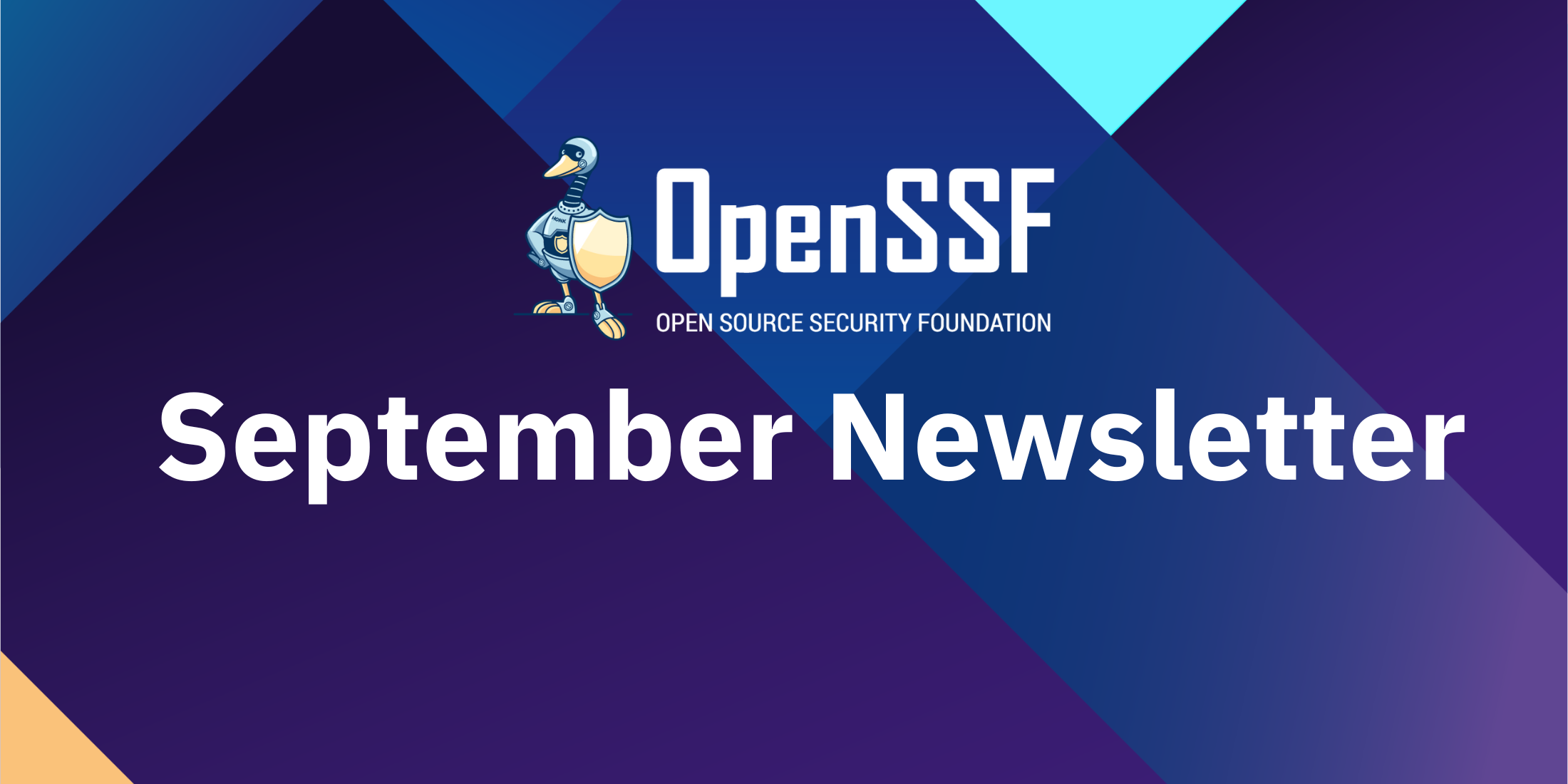
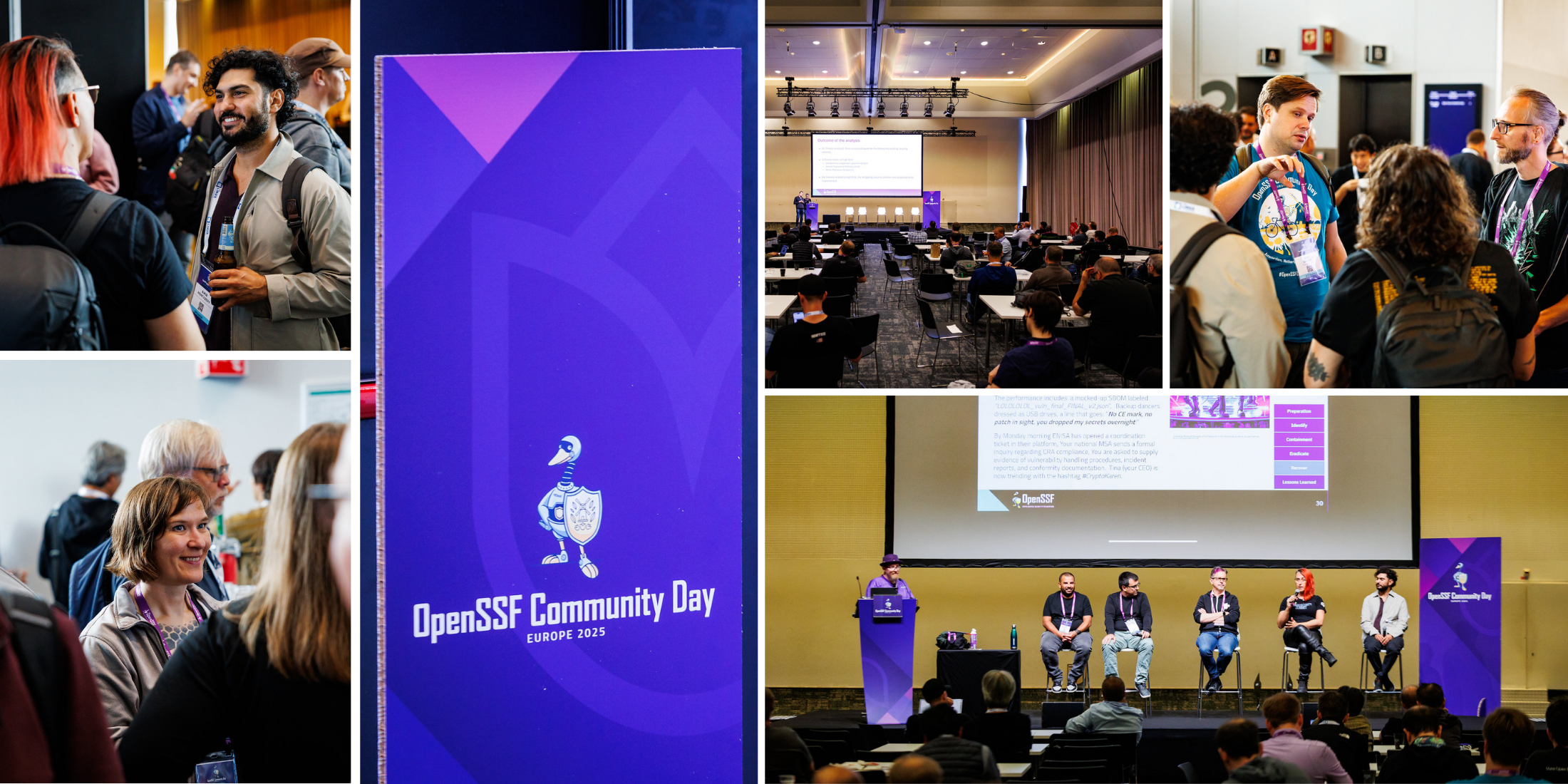 From August 25–28, 2025, the Linux Foundation hosted Open Source Summit Europe and OpenSSF Community Day Europe in Amsterdam, bringing together developers, maintainers, researchers, and policymakers to strengthen software supply chain security and align on global regulations like the EU Cyber Resilience Act (CRA). The week included strong engagement at the OpenSSF booth and sessions on compliance, transparency, proactive security, SBOM accuracy, and CRA readiness.
From August 25–28, 2025, the Linux Foundation hosted Open Source Summit Europe and OpenSSF Community Day Europe in Amsterdam, bringing together developers, maintainers, researchers, and policymakers to strengthen software supply chain security and align on global regulations like the EU Cyber Resilience Act (CRA). The week included strong engagement at the OpenSSF booth and sessions on compliance, transparency, proactive security, SBOM accuracy, and CRA readiness. 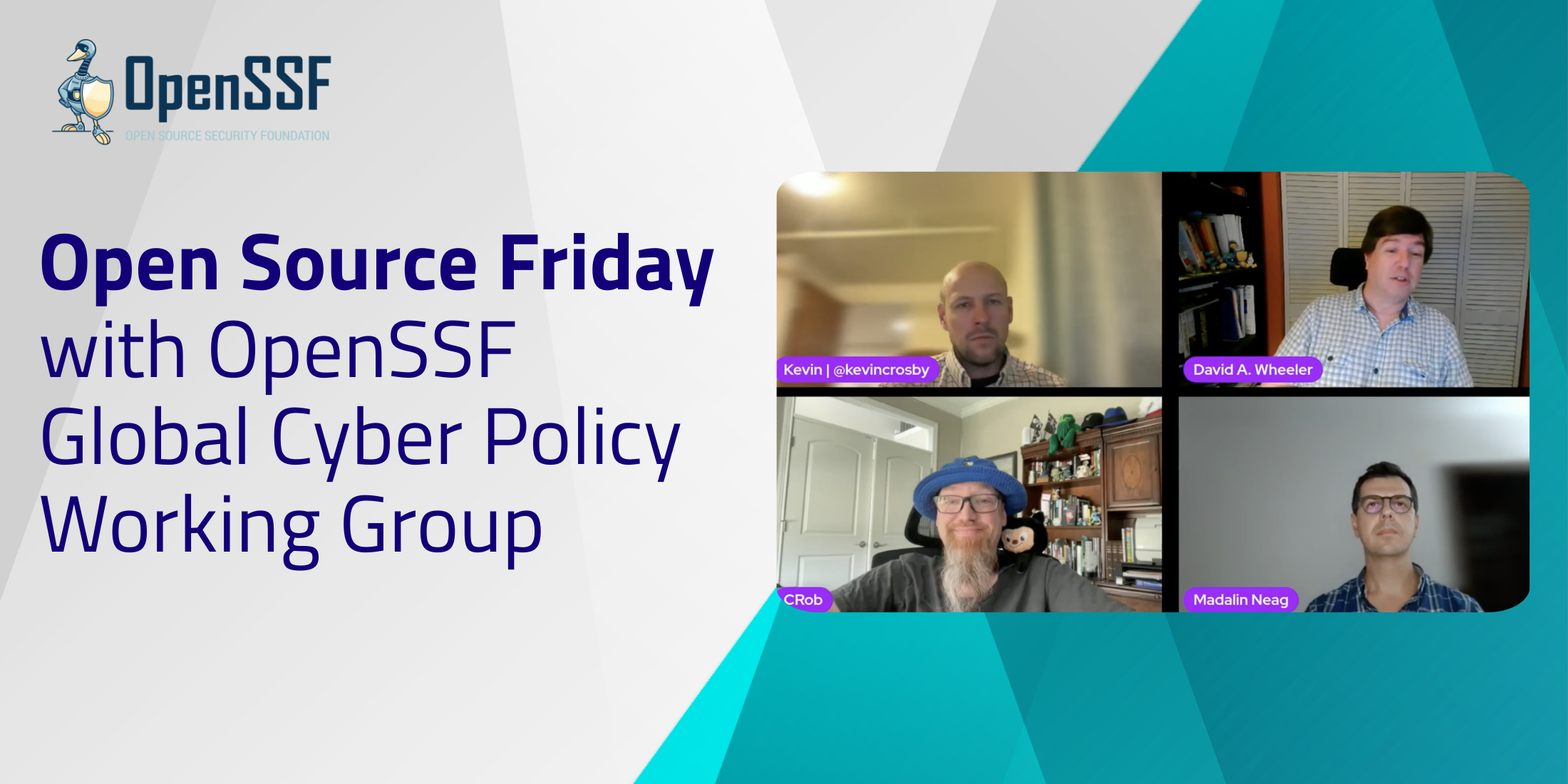 On August 15, 2025, GitHub’s Open Source Friday series spotlighted the OpenSSF Global Cyber Policy Working Group (WG) and the OSPS Baseline in a live session hosted by Kevin Crosby, GitHub. The panel featured OpenSSF’s Madalin Neag (EU Policy Advisor), Christopher Robinson (CRob) (Chief Security Architect) and David A. Wheeler (Director of Open Source Supply Chain Security) who discussed how the Working Group helps developers, maintainers, and policymakers navigate global cybersecurity regulations like the EU Cyber Resilience Act (CRA).
On August 15, 2025, GitHub’s Open Source Friday series spotlighted the OpenSSF Global Cyber Policy Working Group (WG) and the OSPS Baseline in a live session hosted by Kevin Crosby, GitHub. The panel featured OpenSSF’s Madalin Neag (EU Policy Advisor), Christopher Robinson (CRob) (Chief Security Architect) and David A. Wheeler (Director of Open Source Supply Chain Security) who discussed how the Working Group helps developers, maintainers, and policymakers navigate global cybersecurity regulations like the EU Cyber Resilience Act (CRA). 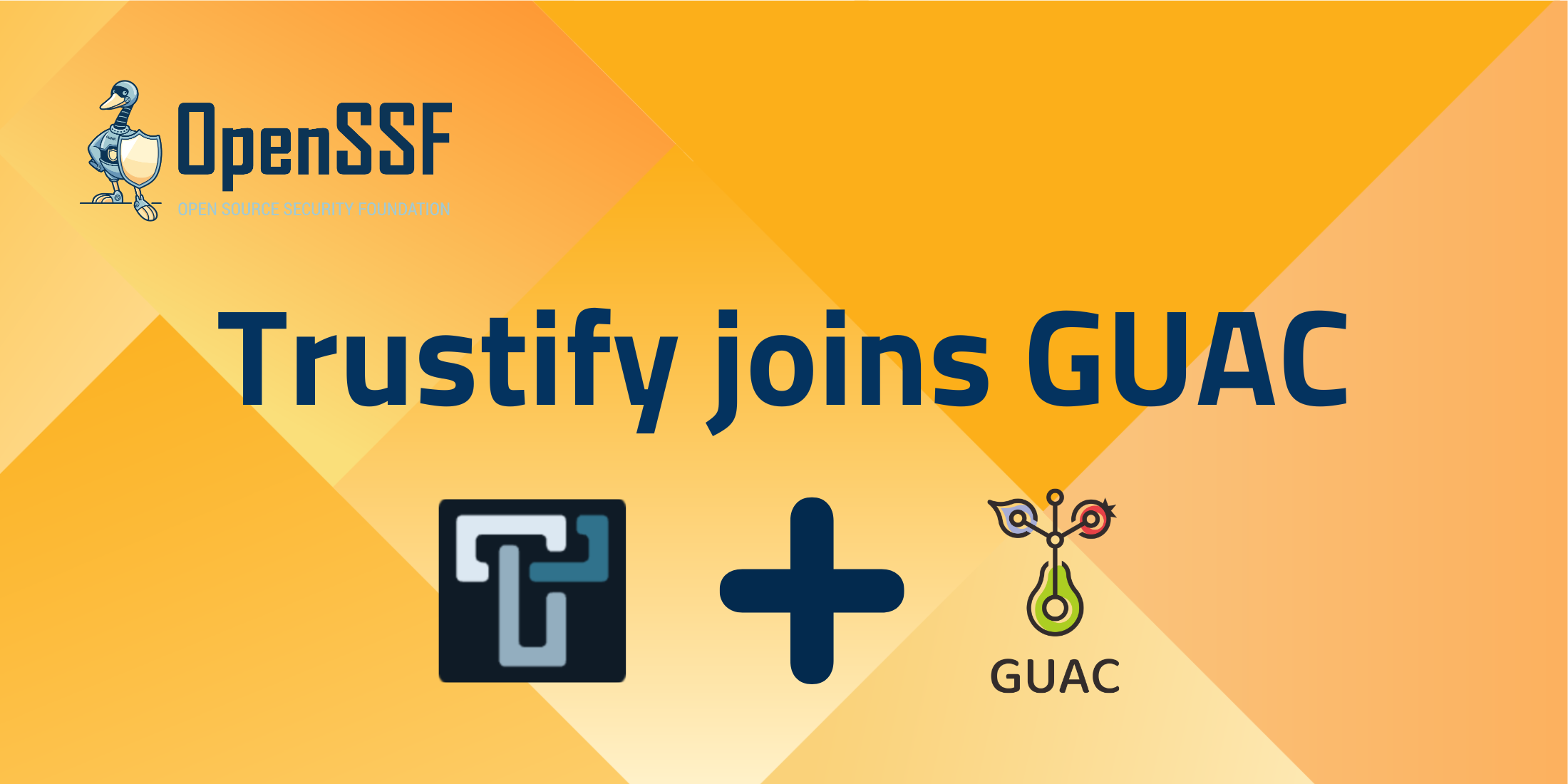 GUAC and Trustify are combining under the GUAC umbrella to tackle the challenges of consuming, processing, and utilizing supply chain security metadata at scale. With Red Hat’s contribution of Trustify, the unified community will serve as the central hub within OpenSSF for building and using supply chain knowledge graphs, defining standards, developing shared infrastructure, and fostering collaboration. Read more.
GUAC and Trustify are combining under the GUAC umbrella to tackle the challenges of consuming, processing, and utilizing supply chain security metadata at scale. With Red Hat’s contribution of Trustify, the unified community will serve as the central hub within OpenSSF for building and using supply chain knowledge graphs, defining standards, developing shared infrastructure, and fostering collaboration. Read more.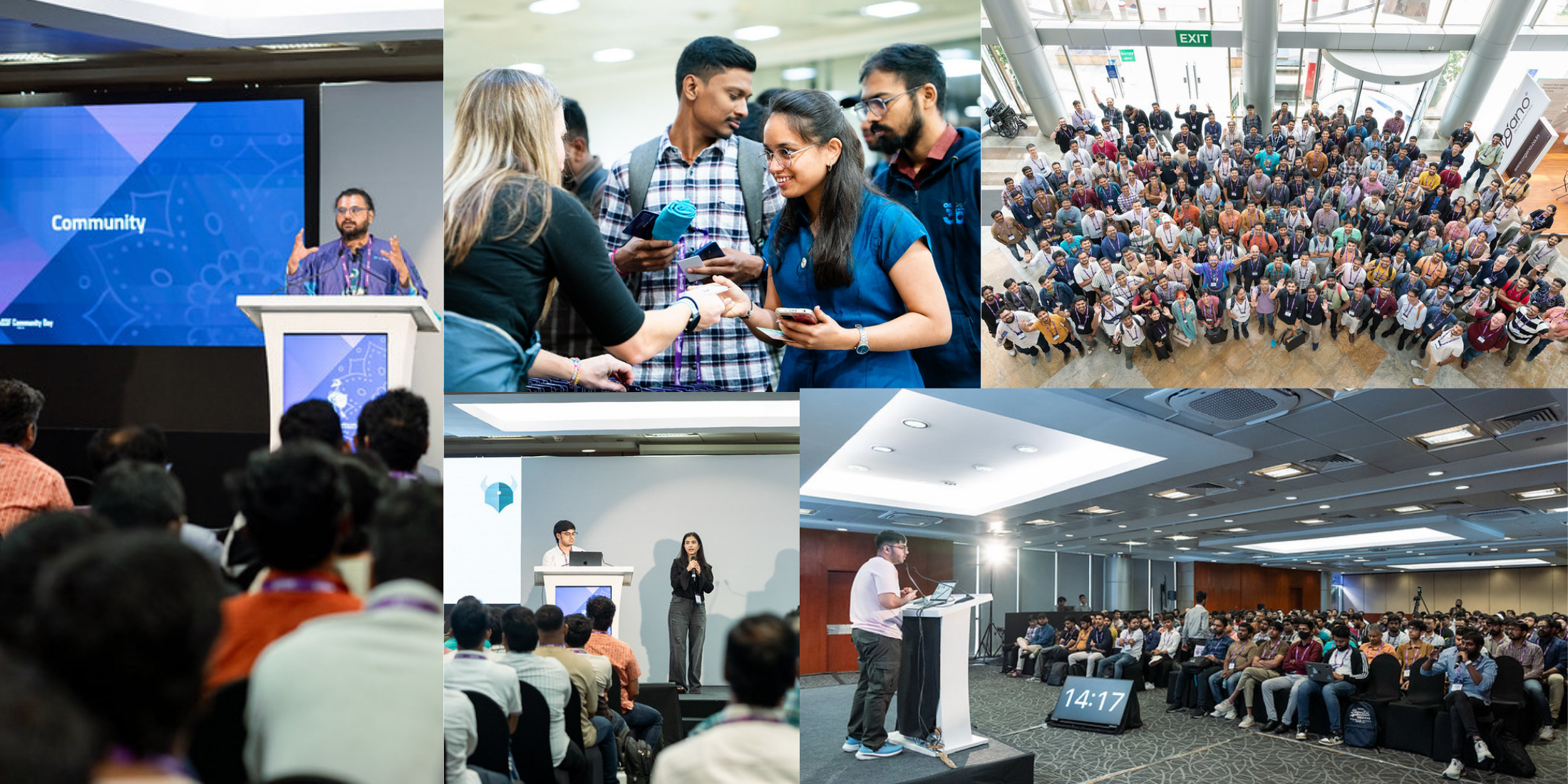 On August 4, 2025, OpenSSF hosted its second Community Day India in Hyderabad, co-located with KubeCon India. With 232 registrants and standing-room-only attendance, the event brought together open source enthusiasts, security experts, engineers, and students for a full day of learning, collaboration, and networking.
On August 4, 2025, OpenSSF hosted its second Community Day India in Hyderabad, co-located with KubeCon India. With 232 registrants and standing-room-only attendance, the event brought together open source enthusiasts, security experts, engineers, and students for a full day of learning, collaboration, and networking.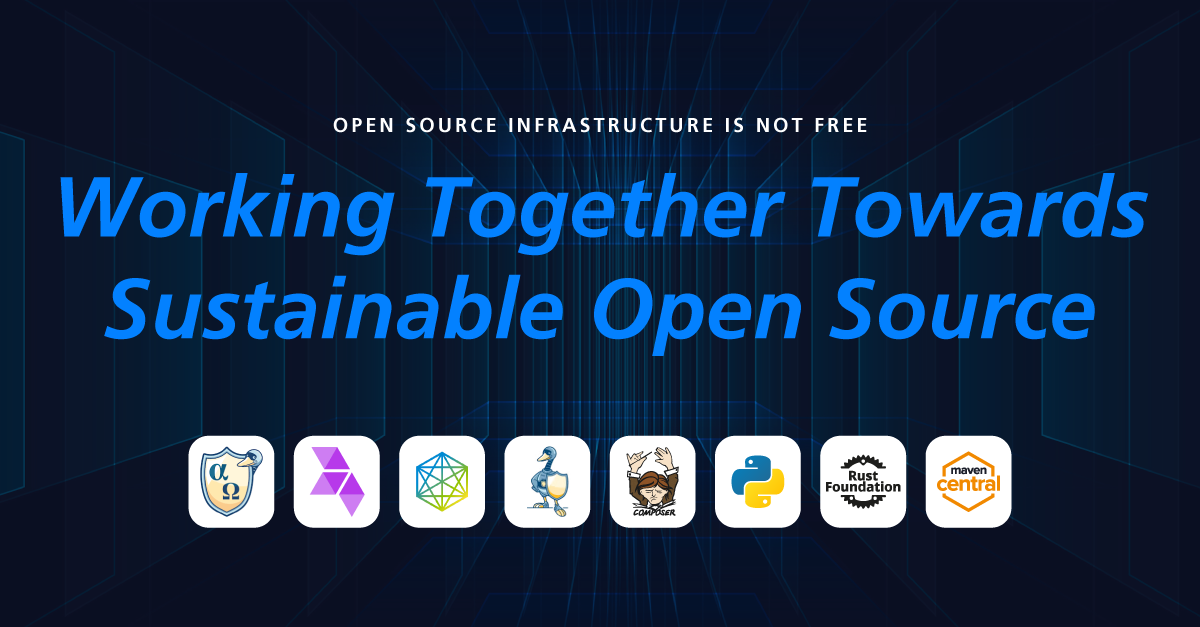 Public package registries and other shared services power modern software at global scale, but most costs are carried by a few stewards while commercial-scale users often contribute little. Our new open letter calls for practical models that align usage with responsibility — through partnerships, tiered access, and value-add options — so these systems remain strong, secure, and open to all.
Public package registries and other shared services power modern software at global scale, but most costs are carried by a few stewards while commercial-scale users often contribute little. Our new open letter calls for practical models that align usage with responsibility — through partnerships, tiered access, and value-add options — so these systems remain strong, secure, and open to all.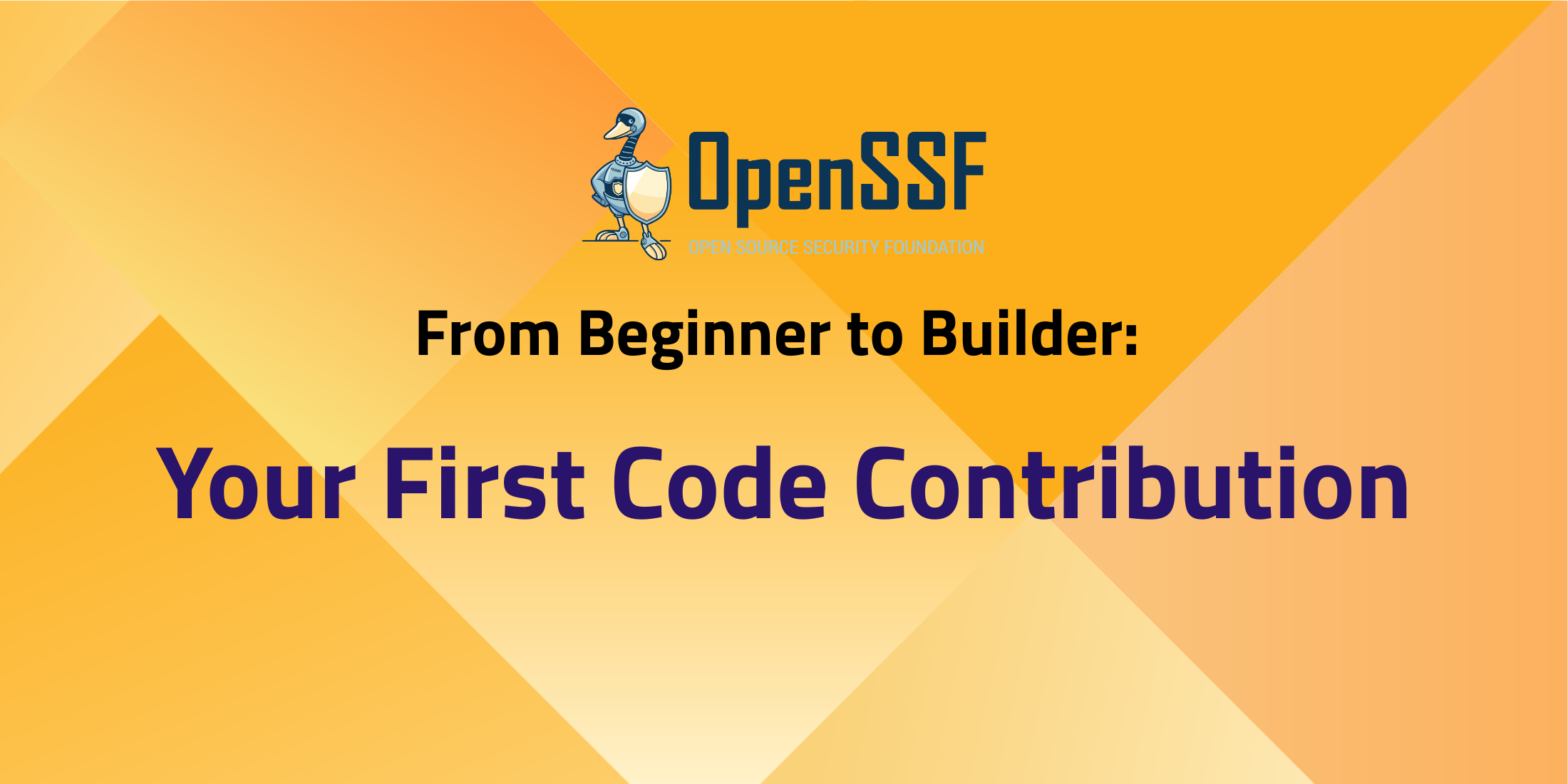
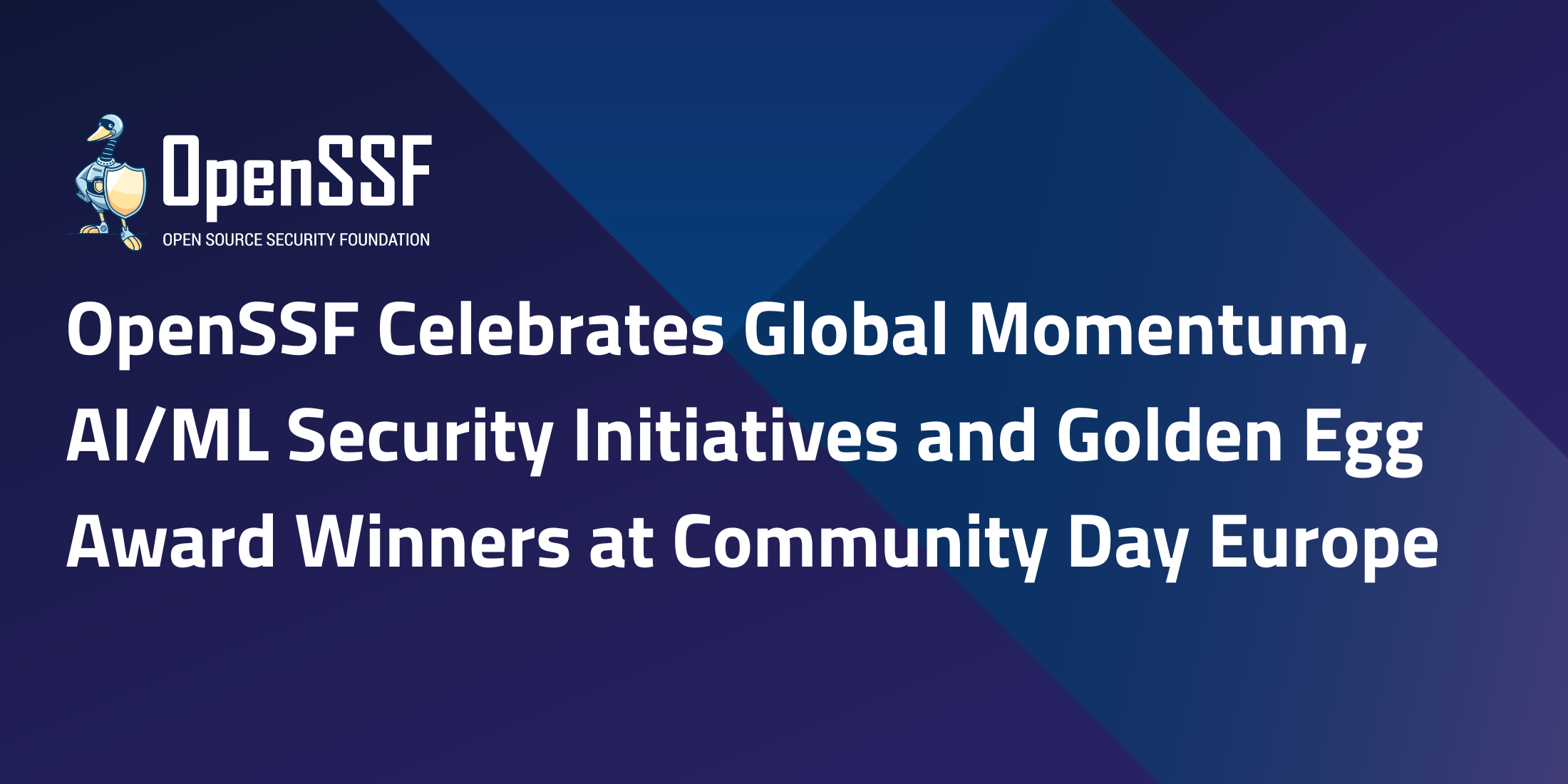
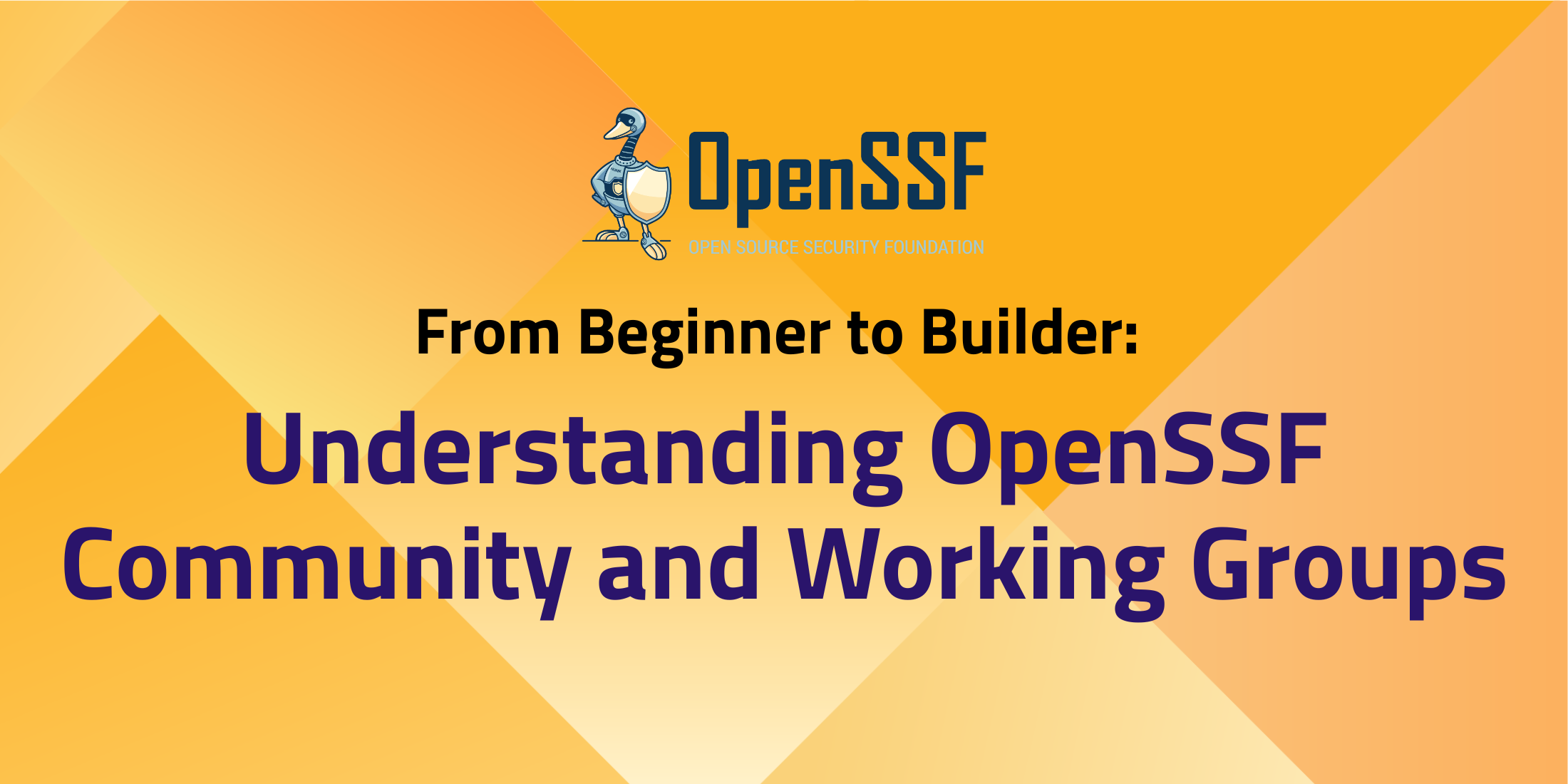
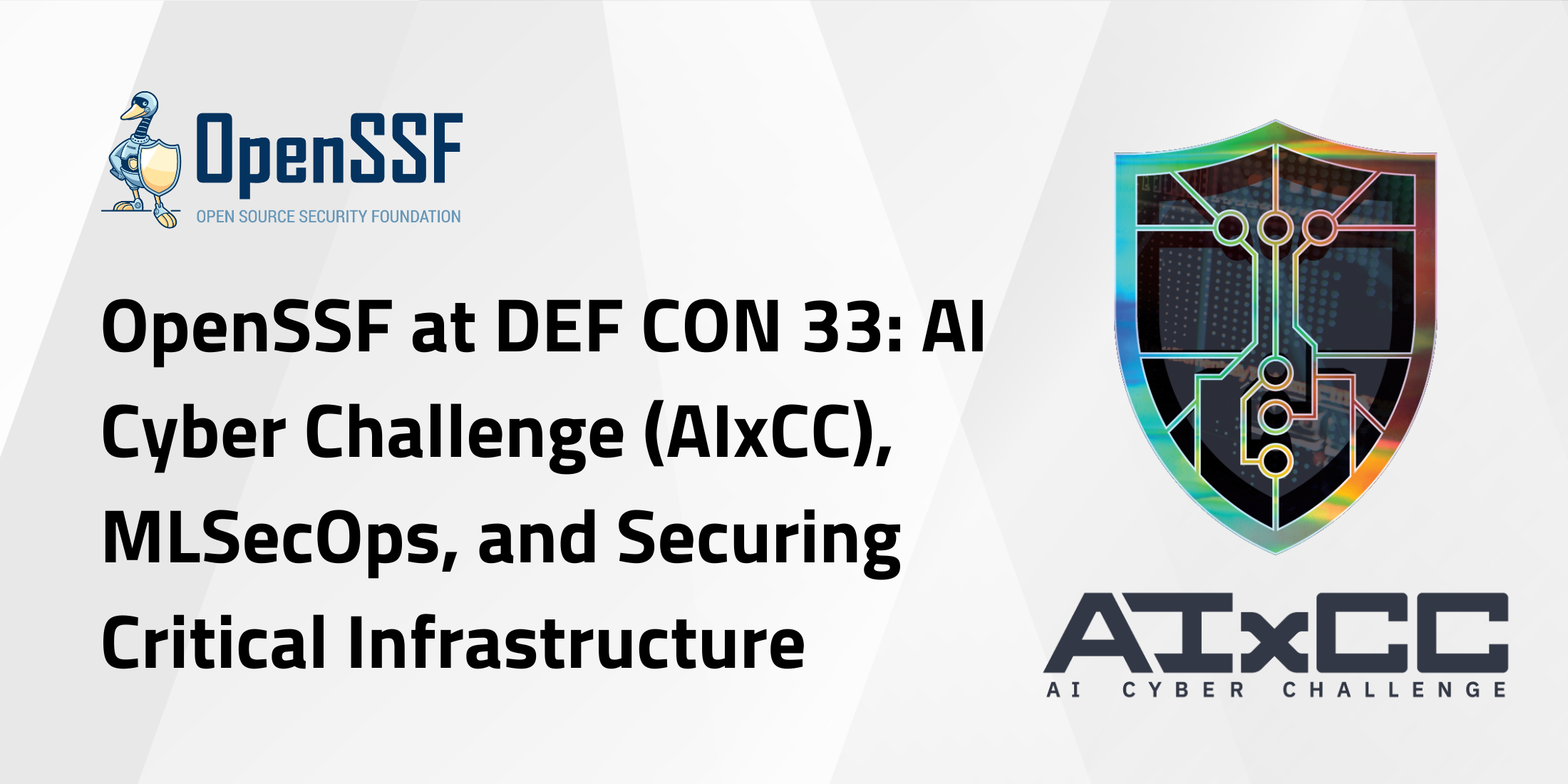
 Jeff Diecks
Jeff Diecks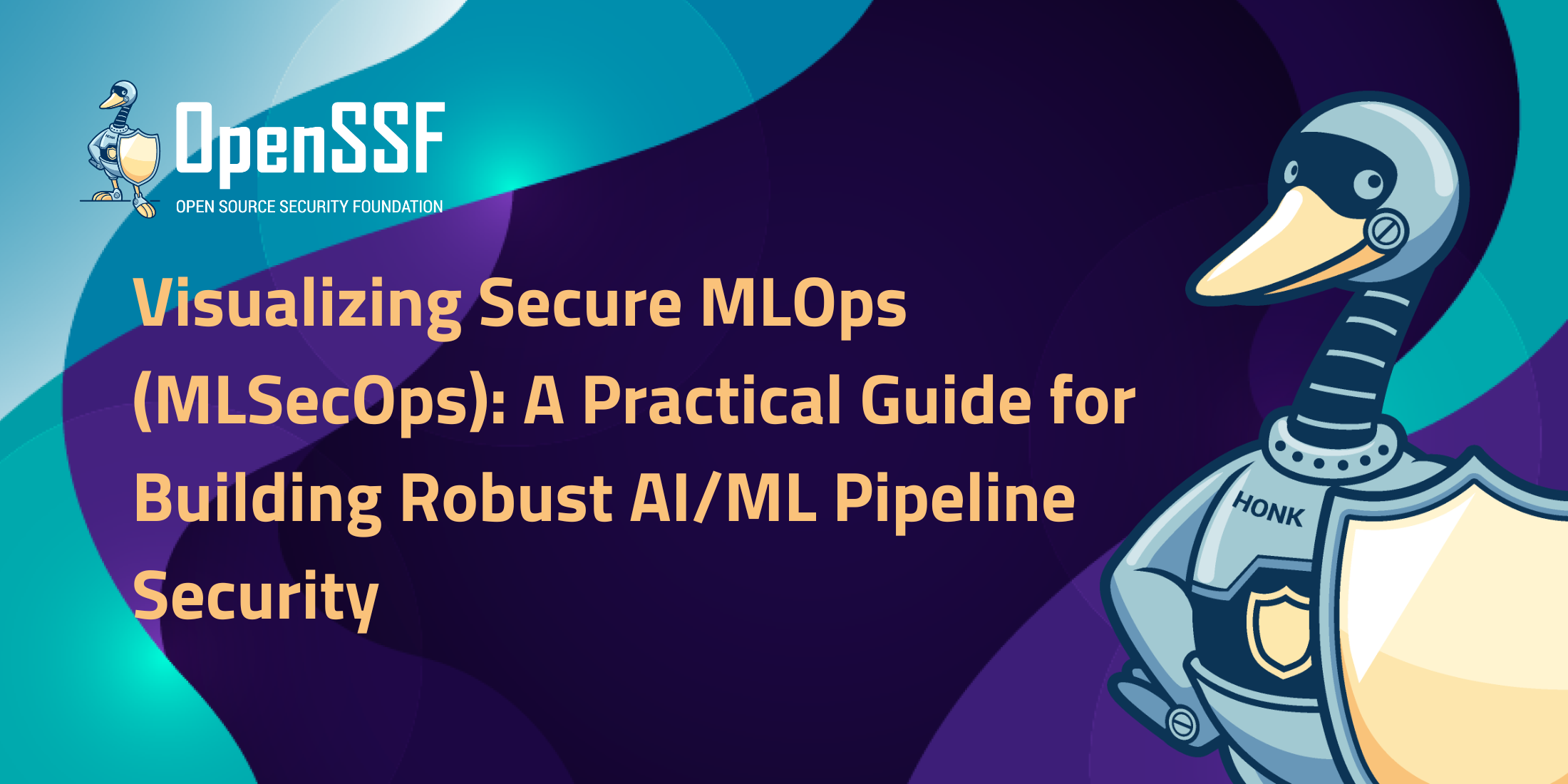
 Sarah Evans
Sarah Evans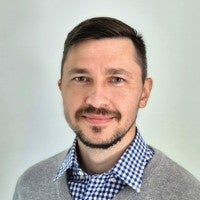 Andrey Shorov
Andrey Shorov